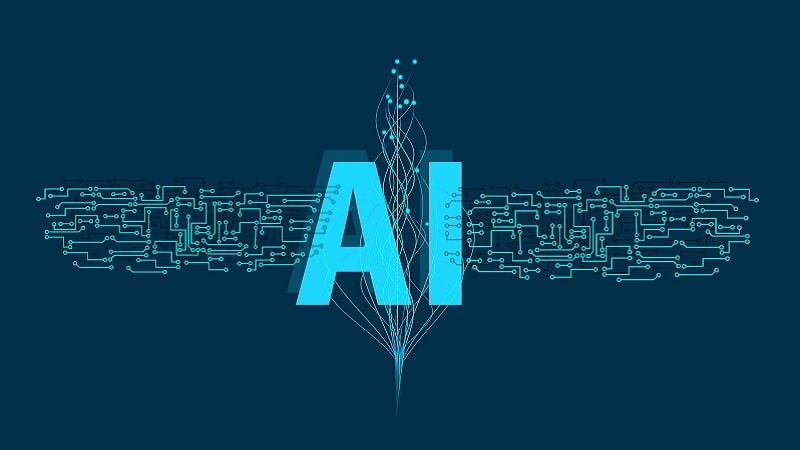
Because data is one of the Federal government’s most valuable assets and a major driver for critical decision-making across numerous Federal agencies, several agency chief data officers (CDOs) said this week they have turned to artificial intelligence (AI) and automation to power the goals of data analysis and readiness.
AI Enabling Data to Decision-Making
For some time, the U.S. Air Force has been on a mission to become AI-ready by 2025 and AI-competitive by 2027, and the service branch’s AI goal is closely aligned with its mission to become a more data-centric agency. Eileen Vidrine, CDO and AI officer for the Department of the Air Force, said during a Sept. 26 Federal News Network event that as the Air Force becomes more data-centric, leveraging AI becomes critical to ensuring that service members have access to authoritative data in analytics at the speed of need.
“We’ve invested significantly in building our Department of the Air Force data fabric to build pipelines to support that data to decision capability,” Vidrine said.
One notable application of AI to ensure better data analytics is the Air Forces’ predictive maintenance community program. The Air Force Rapid Sustainment Office’s Predictive Analytics and Decision Assistant (PANDA) leverages AI software to transform logistics data into actionable predictive maintenance alerts.
“We brought together a team of analysts at our MIT AI accelerator at Lincoln Labs. And we’ve worked with that community to focus on how to use actionable data,” Vidrine said.
The PANDA team has been able to migrate a decade’s worth of safety data into its vault data platform – a critical thread of the Air Force’s data fabric. The team was also able to decode that sensitive data into usable time-sensitive information from a secure and trustworthy source.
“[AI] directly supports this mission. It’s about available, accessible, and actionable data,” Vidrine said. “It’s a great multidisciplinary effort, multiple teams coming together to drive readiness.”
From Paper Data to Digital Data
The U.S. Citizenship and Immigration Services (USCIS) also is at its core a data-driven agency. Data is a key enabler in making decisions and delivering immigration benefits, according to Beth Puchek, CDO at the USCIS.
“Analytics has always been critical to our work. We’ve always forecasted how much work we’re going to have in a year and looked for patterns in immigration trends and so much more,” Puchek said, adding that AI, machine learning, and automation capabilities are key enablers of getting to that data.
The USCIS has started small with different use cases for AI and managed those appropriately. One notable use case is how AI has helped the USCIS take aim at one of its ongoing challenges – taking paper data and converting it into digital data.
For example, USCIS has used robotic process automation for a variety of mission support tasks, including generating and sending daily reports and even accelerating data entry from physical forms into digital systems. In addition, the agency has also used clustering and pattern recognition to try to paint a more personal-centric view of the different actors in the immigration system.
USCIS has also used chatbots to internally connect its IT help desk externally with applicants to get information about the status of their application.
“We have some great use cases in sight that are low risk that will allow us to test out how these will work in our environment,” she said.
Using AI for Defense Cyber Operations
Data is not only an asset to the Federal government, but also an asset to adversaries looking to harvest weakness and what they can exploit within a Federal agency’s infrastructure.
The Defense Information Systems Agency (DISA) is investing in different data tools and principles so that the agency can elevate its data maturity and more efficiently conduct threat analysis within the data.
“We can see what exactly is going on within our network so that we are providing that stellar service to our mission partners,” said Caroline Kuharske, DISA’s CDO.
However, the data required to detect these threats may be distributed across devices and networks. She explained that to ensure that DISA is effectively conducting data threat analysis the agency is leveraging AI capabilities.
For example, through a partnership with the Defense Advanced Research Projects Agency (DARPA), DISA launched the Cyber-Hunting at Scale (CHASE) program. The CHASE program seeks to develop automated tools to detect and characterize novel attack vectors, collect the right contextual data, and disseminate protective measures both within and across enterprises.
“They’re able to dive in with different and different analytical techniques, different large language models, different AI analytic characteristics,” Kuharske said, adding that the team has been using all those different analytical techniques to dive into higher fidelity alerts to get better visualization into what is going on within the network.
“The CHASE program has been able to take a lot of the manual work off our cyber threat analysts with the use of automation and AI. We’re able to sift through the noise and get to that data, that that may be a real-time threat to our infrastructure,” she said.
